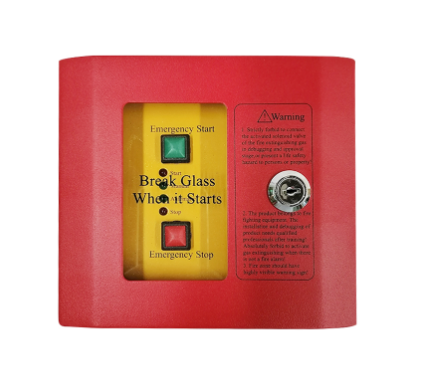Copyright © 2021TANDA Development Pte. Ltd. All rights reserved.Privacy Policy.Site MapDesigned by

As far as three centuries ago, the use of Gas Extinguishing System against fire outbreak has saved a lot of lives and property.
Following the discovery in the 18th century that carbon dioxide has the ability to extinguish flames, it was firstly put into use in Germany in 1929.
Thus, the first installation of Gas extinguishing system was put into operation in 1929 using carbon dioxide.
However, in the 1950s, halons (Chlorofluorocarbons which can put out fire at a particular concentration) are used in fire extinguishing systems before the discovery that they damage the ozone layer.
Nowadays, sophisticated Gas extinguishing systems have been made which make use of gases that are more environmentally friendly.
Currently, inert (non reactive) gases such as nitrogen and argon are used in gas extinguishing systems together with certain halogenated hydrocarbons that are safer to the environment.
But how do these modern gas extinguishing systems work? Come along and let's explore together the working mechanism of gas extinguishing system.
Are you ready? Then let's get started!
The main function of a gas extinguishing system is to put out fire.
When there is a fire outbreak in a room, the control system of the gas extinguisher releases and saturates the air with extinguishing gases.
The extinguishing gases released exert their effects by following three basic mechanisms, which are:

Oxygen is the life sustaining gas which is needed for continuous burning of any substance.
It ensures that a flame keeps burning and can even rekindle a glowing splint. However, the absence of oxygen will choke a burning flame and the fire will go off.
The inert gases present in gas extinguishing system, when released, reduce the percentage of oxygen that is needed to support a burning flame. Therefore the flame gradually goes off.
When the inert gases in the gas extinguishing systems are released, they not only reduce the amount of oxygen in the room but also absorb the heat generated by the burning flame.
The inert gas molecules provide an endothermic (heat absorbing) atmosphere in the room, thus absorbing the heat that has being generated by a fire outbreak.
At first, the gases released by the gas extinguishing system are broken down themselves into certain decomposition products such as hydrogen fluoride and others.
These decomposition products then rapidly diffuse and fill up the room. Their molecules then react with the flame molecules and break them down into non combustible molecules.
When the burning molecules in the flame had been decomposed, the flame gradually goes off and the fire is completely extinguished.
However, some of the decomposition Products of the inert gases may be poisonous and chemically aggressive. Nevertheless, when used appropriately, they do not pose threat to human health.
The occurrence of fire outbreak is unpredictable. It is therefore advisable to have a functional fire extinguishing system in your home, office or shop.
But wait... Seems you are worried about getting a reliable gas extinguishing system. Worry no more, your safety is guaranteed with our Products. Click here to purchase our Products.